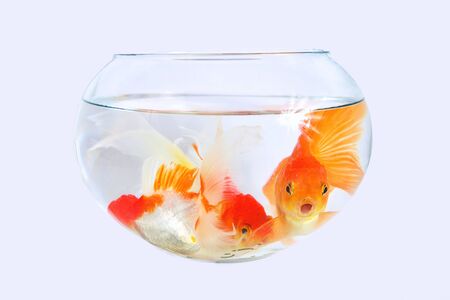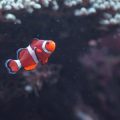Choosing the Right Tank and Equipment
Setting up a tropical fish tank at home begins with selecting the right size tank and essential equipment, especially when considering UK living spaces. It’s important to choose a tank that fits comfortably in your home while providing enough space for your chosen fish species. For most beginners, a 60-litre (15-gallon) tank is ideal as it allows for stable water conditions and is manageable in terms of maintenance. Larger tanks are preferable if you plan on keeping more fish or larger species.
Essential Equipment for Your Tropical Fish Tank
| Equipment | UK Considerations |
|---|---|
| Tank Size | Opt for at least 60 litres; ensure it fits safely on a sturdy, level surface away from direct sunlight. |
| Filter | Choose a high-quality internal or external filter suitable for the tank size; brands like Fluval and Eheim are popular in the UK. |
| Heater | A reliable submersible heater with an adjustable thermostat is crucial; aim for 24-26°C (75-79°F) for most tropical species. |
| Lighting | Select energy-efficient LED lighting designed for aquariums; consider a timer to mimic natural daylight cycles. |
| Lid/Cover | Prevents fish from jumping out and reduces evaporation—essential for maintaining stable temperatures in British homes. |
Additional Gear to Consider
- Aquarium thermometer to monitor water temperature accurately.
- Water conditioner to neutralise chlorine and chloramine in tap water, which is common in UK households.
- A gravel vacuum and algae scraper for easy cleaning and maintenance.
Tips for UK Homes
When setting up your aquarium, position it away from radiators, windows, and draughts to maintain consistent water temperature. If you live in a smaller flat or house, consider corner tanks or bow-front designs that maximise space without compromising on capacity. Investing in quality gear from reputable UK retailers will not only make ongoing care easier but also help ensure a healthy environment for your tropical fish.
2. Selecting an Ideal Location in Your Home
Choosing the right spot for your tropical fish tank is crucial for both the wellbeing of your aquatic pets and the longevity of your aquarium setup. British homes come in a variety of layouts, from Victorian terraces to modern flats, so it’s important to assess your space carefully before deciding. Here are some key considerations:
Safety and Stability
Your aquarium needs a flat, stable surface that can support its full weight when filled with water, gravel, and decorations. Avoid placing tanks on wobbly furniture or near the edges of shelving units. For most UK households, a sturdy cabinet or purpose-built aquarium stand is best.
Household Layout Considerations
| Location Feature | Why It Matters |
|---|---|
| Away from Direct Sunlight | Prevents excessive algae growth and temperature fluctuations. |
| Near Power Sockets | You’ll need easy access for filters, heaters, and lights. |
| Distant from Radiators/Fireplaces | Keeps water temperature steady; avoids overheating. |
| Low Foot Traffic Areas | Minimises stress for fish; reduces risk of accidental knocks or spills. |
Climate Factors in the UK
The British climate is typically mild but can vary with draughts during winter and occasional summer heatwaves. Avoid placing your tank next to windows, exterior doors, or conservatories where temperatures can fluctuate rapidly. Steady room temperatures help keep your tropical fish healthy and stress-free.
Quick Reference: Top Spots vs. Spots to Avoid
| Recommended Locations | Locations to Avoid |
|---|---|
| Living rooms (away from radiators) | South-facing window sills/conservatories |
| Dining areas with stable surfaces | Kitchens (prone to fumes and sudden temp changes) |
| Home offices (quiet corners) | Hallways or near frequently used doors |
Tip:
If you’re unsure about the strength of your floorboards—common in older British houses—consult a professional or choose a smaller tank size suitable for upper floors.

3. Preparing the Aquarium for Setup
Before you introduce any tropical fish to your home aquarium, it’s crucial to properly prepare the tank to create a healthy and attractive environment. Follow these practical steps to ensure your aquarium is ready for its new inhabitants:
Cleaning the Tank
Start by thoroughly rinsing the aquarium with warm water. Avoid using soap or any cleaning products, as residues can be harmful to fish. Use a clean sponge or cloth specifically for aquarium use. If there are stubborn marks, a little white vinegar on a cloth can help, but make sure to rinse it off completely.
Adding Substrate
The substrate not only anchors plants and decorations but also helps beneficial bacteria thrive. Choose a substrate suited for tropical tanks, such as fine gravel or sand. Rinse the substrate several times in a bucket until the water runs clear to remove dust and debris.
| Substrate Type | Best For | Key Benefit |
|---|---|---|
| Gravel | Most tropical setups | Easy to clean, supports plants |
| Sand | Bottom-dwellers (e.g., Corydoras) | Softer on delicate fish barbels |
| Aquatic Soil | Planted aquariums | Nutrient-rich for strong plant growth |
Fitting Equipment
Install all essential equipment before adding water:
- Heater: Attach according to manufacturer’s instructions and place near water flow for even heat distribution.
- Filter: Assemble and position at one end of the tank to maintain effective water circulation.
- Thermometer: Place where it’s easy to monitor daily.
- Lighting: Fit the appropriate LED or fluorescent lights, ensuring they suit both fish and plant needs.
Equipment Checklist
- Aquarium heater (with adjustable thermostat)
- Adequate filter (internal or external)
- Dimmable lighting unit (if possible)
- Tropical aquarium thermometer
- A timer for lights (optional but recommended)
Arranging Decorations for Visual Appeal and Functionality
Create hiding spots and visual interest by thoughtfully arranging ornaments, rocks, driftwood, and artificial or live plants. Place taller decorations towards the back and sides to give depth and leave open swimming space at the front. Ensure all items are cleaned with fresh water before placing them in the tank.
Tips for Effective Arrangement:
- Avoid overcrowding; allow fish plenty of room to swim.
- Create caves or shaded areas for shy species.
- Mimic natural environments with varied textures and heights.
- Check that all decorations are aquarium-safe and free from sharp edges.
This careful preparation ensures your tank is both practical for maintenance and visually pleasing, setting up a thriving aquatic environment from day one.
4. Filling the Tank and Treating Water
Now that your equipment is in place, it’s time to fill your tropical fish tank and prepare the water for its new inhabitants. Follow these simple steps to ensure a healthy aquatic environment using UK tap water and locally available products.
Step 1: Fill the Tank with Tap Water
Use a clean bucket or hose to fill your tank with room-temperature tap water. Place a plate or bowl at the bottom to disperse the flow and avoid disturbing your substrate.
Step 2: Add a Water Conditioner
UK tap water contains chlorine and chloramines, which are harmful to fish. Treat your water with a suitable conditioner such as Tetra AquaSafe, API Tap Water Conditioner, or Interpet Bioactive Tapsafe Plus. Follow the dosage instructions on the bottle for your tank size.
| Brand | Conditioner Name | Main Function | Available in UK? |
|---|---|---|---|
| Tetra | AquaSafe | Removes chlorine/chloramine, adds protective colloids | Yes |
| API | Tap Water Conditioner | Neutralises chlorine/chloramine, detoxifies heavy metals | Yes |
| Interpet | Bioactive Tapsafe Plus | Makes tap water safe, supports beneficial bacteria | Yes |
Step 3: Test Your Water Parameters
Before introducing any fish, check that your water is safe by testing key parameters. Use an aquarium test kit (liquid or strip) easily found at UK pet shops or online.
| Parameter | Ideal Range for Tropical Fish (mg/L) | Test Kit Example (UK) |
|---|---|---|
| pH | 6.5 – 7.5 | API Freshwater Master Test Kit |
| Ammonia (NH3/4+) | <0.02 | Tetra Test EasyStrips Ammonia Kit |
| Nitrite (NO2-) | <0.1 | NUTRAFIN Nitrite Test Kit |
| Nitrate (NO3-) | <40.0* | Tetra Nitrate Test Kit |
*Some tropical species may prefer lower nitrate levels; always research your chosen fish.
Troubleshooting Tips:
- If readings are outside ideal ranges, perform partial water changes and retest after treating the new water.
- If pH is consistently too high or low, consider using specific pH adjusters suitable for tropical aquariums (read product labels carefully).
Your tank is now safely filled and conditioned — you’re ready for the next stage of setting up your tropical aquarium!
5. Introducing Plants and Cycling the Aquarium
To create a thriving environment for your tropical fish, it’s essential to establish a healthy ecosystem before introducing any livestock. This involves adding greenery—either live or artificial—and cycling your tank to develop beneficial bacteria that break down harmful toxins.
Choosing Between Live and Artificial Plants
Both live and artificial plants have their merits in a home aquarium. The table below compares key aspects of each:
| Feature | Live Plants | Artificial Plants |
|---|---|---|
| Natural Filtration | Absorbs nitrates & improves water quality | No effect on water chemistry |
| Maintenance | Requires trimming, fertilising, and care | Simply rinse occasionally |
| Aesthetic Appeal | Lively, natural look; supports microfauna | Consistent appearance; wide variety of designs |
| Cost | Higher initial and ongoing costs | Lower long-term costs; one-off purchase |
| Suits Beginners? | Needs basic plant knowledge | Very easy for all experience levels |
How to Plant Your Aquarium (Step-by-Step)
- Select Suitable Plants: Choose species compatible with your lighting and water conditions. Hardy options like Java fern or Anubias are ideal for beginners.
- Rinse Before Placing: Wash live plants gently under tap water to remove hitchhiking pests or debris. Rinse artificial plants to remove dust.
- Arrange Thoughtfully: Place taller plants at the back, mid-sized in the middle, and shorter ones at the front for depth and visibility.
- Bury Roots Properly: Ensure roots are covered but not tightly packed to allow growth and prevent rot.
- Add Fertiliser (for live plants): Use aquarium-safe root tabs or liquid fertilisers as needed.
Cycling Your Tank: Establishing Beneficial Bacteria
Cycling refers to developing colonies of bacteria that convert fish waste into less harmful substances. This process typically takes 4–6 weeks and is crucial for your fishes’ health.
The Nitrogen Cycle Explained:
- Ammonia (NH3): Produced by decomposing food, plants, and waste—highly toxic to fish.
- Nitrite (NO2): Bacteria convert ammonia into nitrites, which are still harmful.
- Nitrate (NO3): Further bacteria convert nitrites into nitrates, which are safe at low levels and removed via water changes or absorbed by live plants.
Cycling Steps:
- Add an Ammonia Source: Use fish food or bottled ammonia to start the cycle without harming any fish (“fishless cycling”).
- Test Water Regularly: Use a test kit every few days to monitor ammonia, nitrite, and nitrate levels.
- Wait for Stability: Once ammonia and nitrite read zero and nitrate is present, your tank is cycled.
- Partial Water Change: Perform a 25–30% water change before introducing your first fish.
- Avoid Rushing: Patience ensures a safe, stable home for your new aquatic pets!
A properly planted and cycled aquarium lays the foundation for happy, healthy tropical fish—so take your time with this step before moving on to stocking your tank.
6. Choosing and Adding Tropical Fish
Selecting the right tropical fish is key to maintaining a harmonious aquarium environment. When visiting your local British aquatic shop, speak with knowledgeable staff for guidance on species that are both beautiful and compatible.
Tips for Selecting Compatible Fish
| Fish Type | Temperament | Ideal Tank Mates | Notes |
|---|---|---|---|
| Neon Tetra | Peaceful | Other small tetras, Corydoras | Best in groups of 6 or more |
| Guppy | Lively | Mollies, Platies, Swordtails | Avoid fin-nippers like Tiger Barbs |
| Zebra Danio | Active | Tetras, Corydoras, Rasboras | Great beginner fish, hardy nature |
| Corydoras Catfish | Docile bottom-dweller | Tetras, Guppies, Danios | Keep in groups of at least 4-5 |
| Dwarf Gourami | Semi-peaceful | Tetras, Corydoras, peaceful barbs | Males can be territorial; limit to one per tank if possible |
Shopping at Local British Aquatic Shops
- Ask for advice: Staff are usually well-trained and can recommend suitable species for your tank size and water conditions.
- Check fish health: Look for clear eyes, active swimming, and vibrant colours. Avoid any fish showing signs of illness.
- Support local breeders: Many shops offer UK-bred stock, which are often hardier and better adapted to local water conditions.
- Avoid overcrowding: Always follow the recommended stocking levels for your tank size.
The Gradual Introduction Process (Acclimatisation)
- Float the bag: Place the sealed bag containing your new fish in the tank for 15-20 minutes to match the water temperature.
- Add tank water: Every 5 minutes, add a small amount of aquarium water into the bag. Repeat this step over 20-30 minutes.
- Release gently: Use a net to transfer the fish from the bag to the tank. Avoid pouring shop water into your aquarium to reduce disease risk.
- Monitor closely: Observe new arrivals for signs of stress or aggression from existing fish. Keep lighting dim during introduction to help them settle.
Quick Reference: Common Mistakes to Avoid
- Adding too many fish at once: Start with a few and gradually build up your community over several weeks.
- Selecting incompatible species: Research each species’ temperament before purchase to prevent bullying or predation.
- Ineffective acclimatisation: Rushing this process can lead to shock and illness.
- Poor quarantine practices: If possible, quarantine new arrivals for two weeks before adding them to your main tank.
Your Next Step: Enjoy Observing Your New Community!
If you take care in selecting and introducing your fish slowly, you’ll enjoy a thriving and peaceful tropical aquarium that’s truly a centrepiece in any British home.
7. Ongoing Maintenance and Care Tips
Maintaining a tropical fish tank in the UK requires regular attention to ensure a healthy environment for your aquatic pets. The following routine tasks will help keep your aquarium clean and your fish thriving, while also considering the unique aspects of British tap water and seasonal changes.
Weekly Maintenance Tasks
| Task | Details |
|---|---|
| Partial Water Change | Replace 10-20% of the tank water each week using dechlorinated water at a similar temperature to your aquarium. UK tap water often contains chlorine and chloramines, so always use a good quality water conditioner. |
| Gravel Vacuuming | Use a siphon to remove debris and waste from the substrate, focusing on areas with visible build-up. |
| Glass Cleaning | Wipe the inside of the glass with an algae scraper or magnetic cleaner to prevent algae growth. |
Monthly Checks
- Filter Maintenance: Rinse filter sponges or media in tank water (not tap water) to preserve beneficial bacteria. Replace filter media as recommended by the manufacturer.
- Water Testing: Test for pH, ammonia, nitrite, and nitrate levels using an aquarium test kit. UK tap water can be hard or soft depending on your region—adjust accordingly if needed.
Seasonal Considerations in the UK
Winter
- The ambient room temperature may drop; check that your aquarium heater is functioning properly to maintain stable water temperatures (typically 24-26°C for most tropical species).
Summer
- Avoid placing your tank near direct sunlight or radiators, as this can lead to overheating. Consider using a fan or keeping windows open (with care) during heatwaves, but monitor temperature closely.
Feeding Routine
Feed your fish small amounts once or twice daily, ensuring all food is consumed within 2-3 minutes to avoid excess waste and water pollution.
General Health Monitoring
- Observe your fish daily for signs of illness, such as unusual swimming patterns, spots, or lack of appetite.
- If you notice any problems, take prompt action—consult with your local aquatics shop or a qualified vet experienced in tropical fish care.
By following these ongoing maintenance steps tailored to the UK environment, youll create a healthy and beautiful home for your tropical fish year-round.


